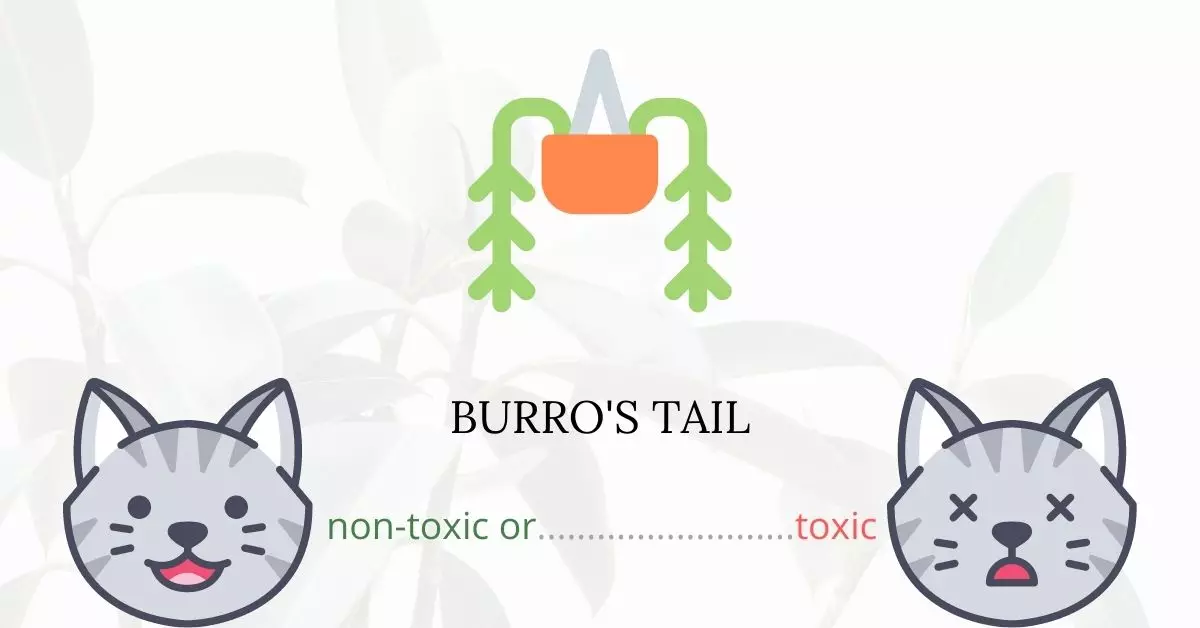Burro’s Tail is deemed non-toxic for cats. According to trusted sources such as the American Society for the Prevention of Cruelty to Animals (ASPCA), it is categorized as safe not only for cats but also for dogs and horses.
This article has been curated in close collaboration with a team of experienced DVMs (doctors of veterinary medicine). Through their expertise, combined with rigorous research from high-authority websites including ASPCA and PetMD, we provide you with precise and up-to-date information regarding the potential risks associated with various plants, in this instance, the Burro’s Tail, and their effects on cats.
Even if the Burro’s Tail is considered safe, does it mean your feline friend should eat it? Dive into the subsequent sections to ascertain whether cats can consume Burro’s Tail and discover useful tips to prevent your cats from meddling with your cherished houseplants.
Can Cats Eat Burro’s Tail?
There is no life-threatening effect if your cat has eaten a bit of burro’s tail. It does not contain poisonous substances that can harm your felines so there is nothing to worry about.
But, remember that plants are hard for cats to digest. Eating a lot of plants will make them feel sick. It may cause digestive upset and make your cat suffer from mild vomiting and diarrhea.
Another general tip is to avoid applying fertilizers, insecticides, and other chemicals to your plants. If your cats swallow or are exposed to a plant containing chemical residue, they may become poisoned.
What is Burro’s Tail?
Burro’s tail is also known by various names, including Horse’s Tail, Donkey’s Tail, and Lamb’s Tail. Scientifically, it is known as Sedum morganianum which is a species of flowering plant in the family Crassulaceae. Burro’s tail is a trailing perennial with up to 60 cm long stems, thick blue-green leaves, and terminal pink to red blooms in the summer.
The genus sedum to which the burro’s tail belongs is composed of evergreen succulent, herbaceous perennials with mushy, flat, or spherical leaves. The plant frequently stands erect and sprawls across the ground. The name derives from the Latin word sedeo, which means “to sit,” and refers to the habit of some sedum species of reclining and spreading across rocks.
Burro’s tail is endemic to Mexico and the Dominican Republic, although it can withstand temperatures as low as 40 degrees Fahrenheit when cultivated outside in milder areas. The plant grows swiftly and tolerates rocky and poor soils. It is drought and dry soil resistant because of its succulent leaves.
Due to their cascading growth pattern and fragility, plants are an excellent choice for usage as hanging succulent plants. The thick, succulent leaves readily fall off, and if they land in soil, they take root and flourish.
Keeping Cats Away From Burro’s Tail
Burro’s tail is ideal to place in a hanging basket. Aside from the aesthetic value, you can also protect your burro’s tail in this way since it is out of your cat’s reach.
If your burro’s tail is grown in pots, you may wrap an aluminum foil around the pot to deter your cats. Spraying vinegar on your plants will also help from keeping your cats away. Cats detest the sour odor and taste of vinegar.
Plants to Avoid For Your Cats
If you are a cat owner and unsure if the plants growing in your yard are harmful to your cats, check out this list of toxic plants for cats. You can also check our list of non-toxic plants for cats.





